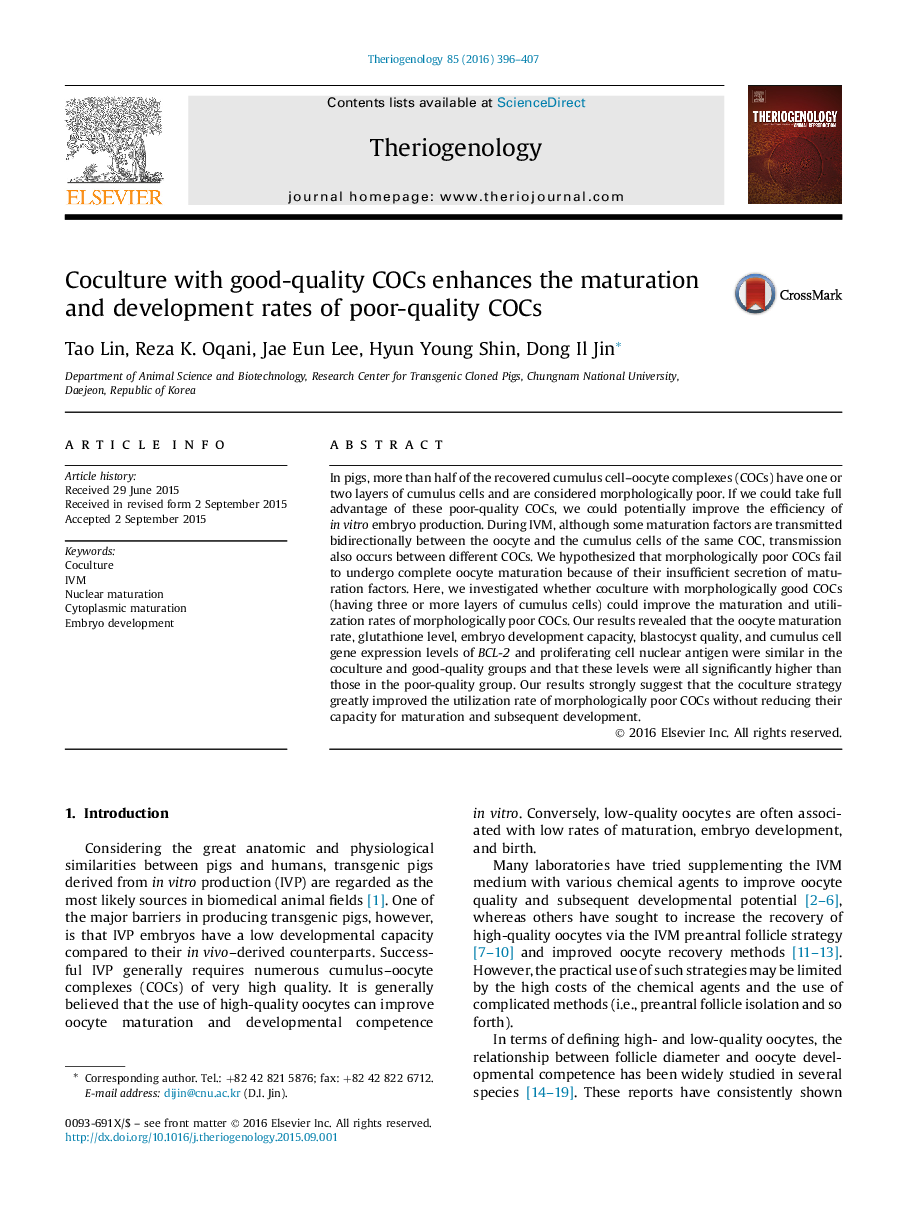| Article ID | Journal | Published Year | Pages | File Type |
|---|---|---|---|---|
| 2095413 | Theriogenology | 2016 | 12 Pages |
In pigs, more than half of the recovered cumulus cell–oocyte complexes (COCs) have one or two layers of cumulus cells and are considered morphologically poor. If we could take full advantage of these poor-quality COCs, we could potentially improve the efficiency of in vitro embryo production. During IVM, although some maturation factors are transmitted bidirectionally between the oocyte and the cumulus cells of the same COC, transmission also occurs between different COCs. We hypothesized that morphologically poor COCs fail to undergo complete oocyte maturation because of their insufficient secretion of maturation factors. Here, we investigated whether coculture with morphologically good COCs (having three or more layers of cumulus cells) could improve the maturation and utilization rates of morphologically poor COCs. Our results revealed that the oocyte maturation rate, glutathione level, embryo development capacity, blastocyst quality, and cumulus cell gene expression levels of BCL-2 and proliferating cell nuclear antigen were similar in the coculture and good-quality groups and that these levels were all significantly higher than those in the poor-quality group. Our results strongly suggest that the coculture strategy greatly improved the utilization rate of morphologically poor COCs without reducing their capacity for maturation and subsequent development.
